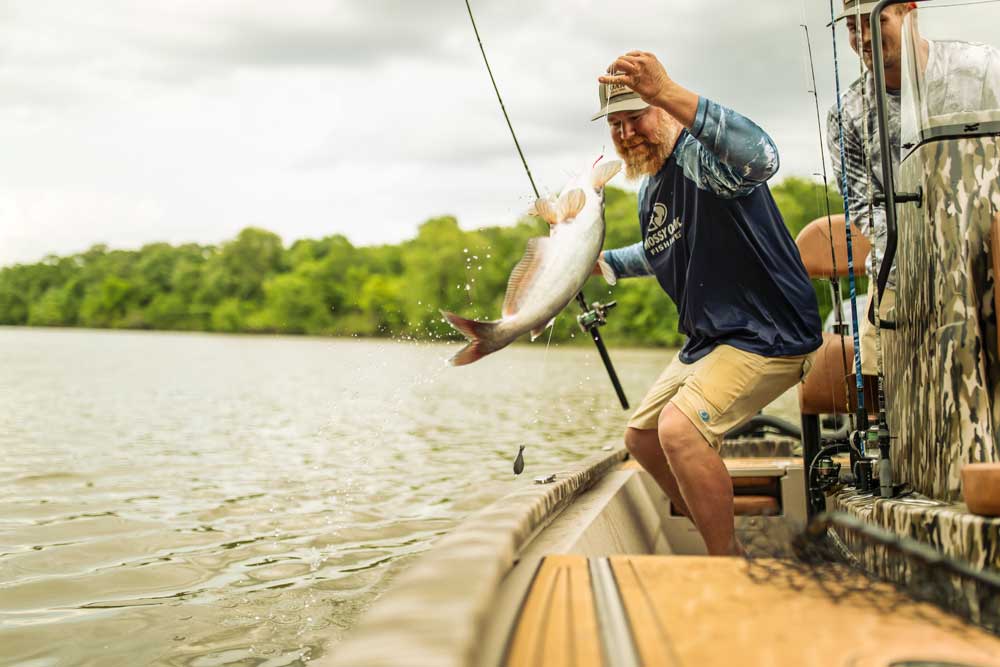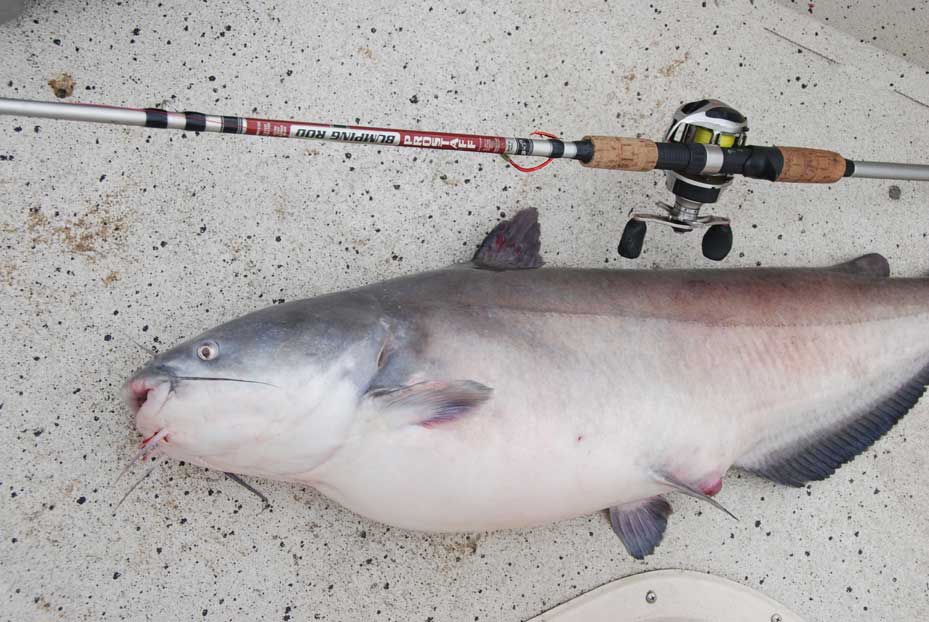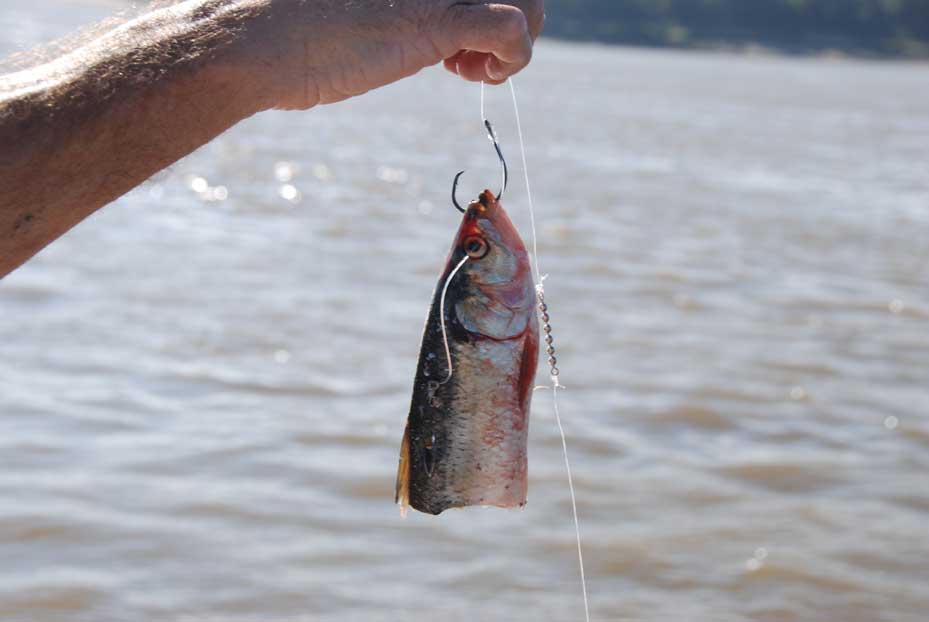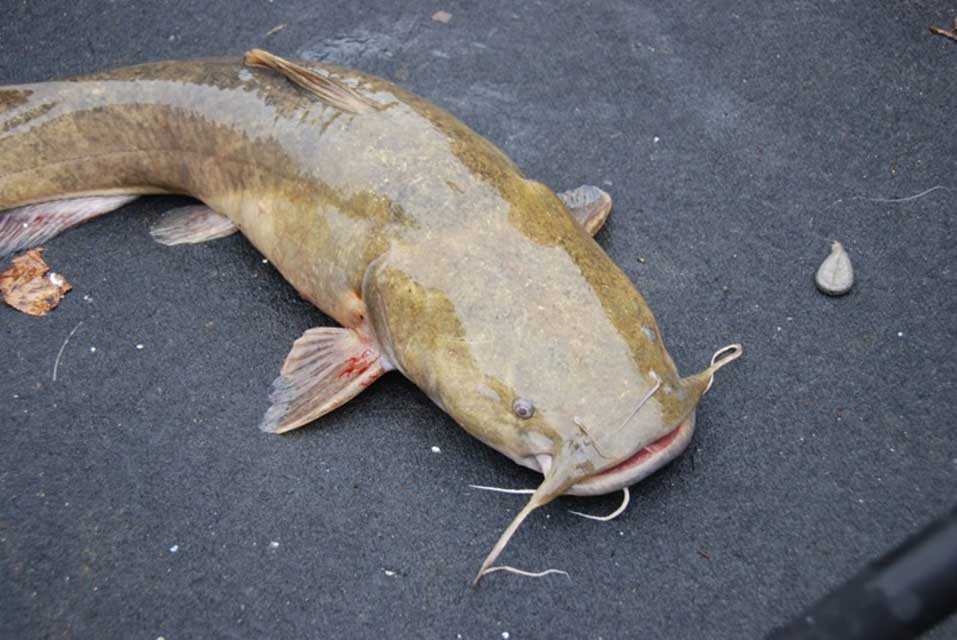Phillip Gentry

Unlike most other fish species, attempting to catch blue catfish during their annual spawning season is a more difficult task than the remainder of the year. The primary reason for this difficulty is that blue catfish remove themselves from availability to anglers – basically crawling up in a hole and refusing to eat until their reproductive business is finished.
Fortunately, the post-spawn season for blue catfish is generally more productive than the typical lull experienced with most other species of fish. Post-spawn catfishing may not be exactly easy, but it’s definitely doable if you keep some ideas in mind when pursuing blue catfish in particular or other species such as channel catfish and flathead catfish in general.

HOW TO USE DIP BAITS FOR CHANNEL CATFISH
Male catfish are generally the first to recover from the spawn. Males emerge from holes and out from under logs looking like they’ve been drug down a mile of hard country road. Beat up and bruised, male catfish will produce some of the hardest bites you may get during a year’s worth of catfishing. Expect the bite to be hard and fast but not the typical feeding bite you might expect. Post-spawn males tend to grab and crush and will grip a bait for sometime before taking it down. This may factor into your response when fishing for them.
Blue catfish tend to be thought of as a bottom feeder, but will at times suspend up in the water column. At post-spawn time, it’s not unusual to find trophy-sized fish more than 10 feet off the bottom.
Suspend fishing for catfish is a vertical approach with lines nearly vertical in the water. Some catfish anglers opt to use long, stout rods, 10 to 12 feet in length, in order to get more spread between baits.
Modern sonar capabilities make locating suspended catfish much easier than finding them on the bottom, although it’s easy to misidentify catfish hanging out above the bottom by confusing them with other large species like striped bass and carp.

In areas where river herring are the natural forage bait, a cut piece of fresh herring is hard to beat as bait. Rig your rods with 30 to 40-pound line and use a standard Carolina rig to present the bait. Offset circle hooks in the 5/0 – 8/0 range are standard. Consider snelling the hook to the leader rather than trying to tie a knot that may not seat correctly when using 50 to 60-pound mono leader.
If advances in sonar technology make finding suspended catfish easier, it’s a drop in the bucket compared to modern electric trolling motor technology, which all but eliminates the need for ropes, anchors and the headaches that go along with anchoring in deep water.
Veteran catfish anglers now use the GPS positioning feature available in more advanced trolling motors to hold in one spot, allowing the GPS sensor to compensate for current, wind, or tide by locking onto a GPS location and maneuvering the head of the motor accordingly.
Since lines are vertical in the water with little danger of fouling on bottom structure, bumping the trolling motor into gear and changing locations with the movement of the fish on the graph make for much easier fishing.
An alternative to suspended catfishing during the post spawn is using a tactic called bumping. Bumping is most effective in rivers or other areas with heavy current, i.e. prime catfishing waters. Large rivers and waterways are the top spots, but tail races or canals coming out of reservoirs, especially when releasing current, are another option.
Bumping provides a natural presentation and allows the angler to cover a fair amount of water. It mimics food washing down current where catfish will lay facing upstream, waiting for something to come by.

To imitate this, nose the boat into the current and let the current push the boat back while using the trolling motor to troll into the current, enough to cut the boat’s drift speed in half. The boat is going slower than the current, so the bait is also going slower downstream.
A fairly heavy weight is used to bump the bottom as the boat moves backwards. A dropper rig is tied 2 to 3 feet above the weight to hold the bait off the bottom.
Bumping is the lake angler’s answer to trolling in a river where going with the flow would move the bait too fast to fish effectively. The tactic might seem to be a vertical presentation, but to get the right angle in the presentation, the angler lets out more and more line until the bait is nearly sliding across the bottom with the current at a much slower speed than trolling with the current.
Bumping is not a multiple rod tactic with each angler fishing only one rod each, but the tactic has become a proven method for putting big catfish in the boat.




























